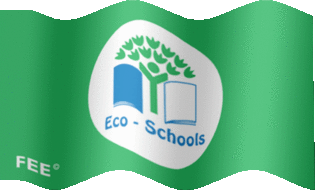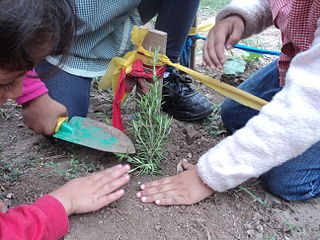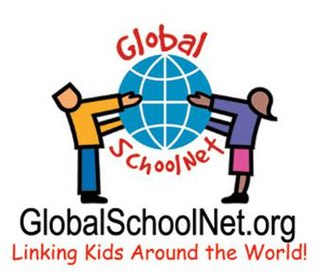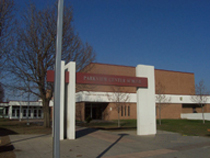Related Research Articles

Experiential education is a philosophy of education that describes the process that occurs between a teacher and student that infuses direct experience with the learning environment and content. The term is not interchangeable with experiential learning; however experiential learning is a sub-field and operates under the methodologies of experiential education. The Association for Experiential Education regards experiential education as "a philosophy that informs many methodologies in which educators purposefully engage with learners in direct experience and focused reflection in order to increase knowledge, develop skills, clarify values, and develop people's capacity to contribute to their communities". Experiential education is the term for the philosophy and educational progressivism is the movement which it informed.

In education, a curriculum is broadly defined as the totality of student experiences that occur in the educational process. The term often refers specifically to a planned sequence of instruction, or to a view of the student's experiences in terms of the educator's or school's instructional goals. In a 2003 study, Reys, Reys, Lapan, Holliday, and Wasman refer to curriculum as a set of learning goals articulated across grades that outline the intended mathematics content and process goals at particular points in time throughout the K–12 school program. Curriculum may incorporate the planned interaction of pupils with instructional content, materials, resources, and processes for evaluating the attainment of educational objectives. Curriculum is split into several categories: the explicit, the implicit, the excluded, and the extracurricular.
The International School of Curitiba (ISC), founded in 1959, is located in Curitiba, Paraná, Brazil.

Outdoor education is organized learning that takes place in the outdoors. Outdoor education programs sometimes involve residential or journey wilderness-based experiences in which students participate in a variety of adventurous challenges and outdoor activities such as hiking, climbing, canoeing, ropes courses and group games. Outdoor education draws upon the philosophy, theory, and practices of experiential education and environmental education.

Environmental education (EE) refers to organized efforts to teach how natural environments function, and particularly, how human beings can manage behavior and ecosystems to live sustainably. It is a multi-disciplinary field integrating disciplines such as biology, chemistry, physics, ecology, earth science, atmospheric science, mathematics, and geography. The United Nations Educational, Scientific and Cultural Organisation (UNESCO) states that EE is vital in imparting an inherent respect for nature among society and in enhancing public environmental awareness. UNESCO emphasises the role of EE in safeguarding future global developments of societal quality of life (QOL), through the protection of the environment, eradication of poverty, minimization of inequalities and insurance of sustainable development. The term often implies education within the school system, from primary to post-secondary. However, it sometimes includes all efforts to educate the public and other audiences, including print materials, websites, media campaigns, etc.. There are also ways that environmental education is taught outside the traditional classroom. Aquariums, zoos, parks, and nature centers all have ways of teaching the public about the environment.
Forest school is an outdoor education delivery model in which students visit natural spaces to learn personal, social and technical skills. It has been defined as "an inspirational process that offers children, young people and adults regular opportunities to achieve and develop confidence through hands-on learning in a woodland environment". Forest school is both a pedagogy and a physical entity, with the use often being interchanged. The plural "schools" is often used when referring to a number of groups or sessions.
The ProgramByDesign project is an outreach effort of the PLT research group. The goal is to train college faculty, high school teachers, and possibly even middle school teachers, in programming and computing.

Eco-Schools is an international programme of the Foundation for Environmental Education (FEE) that aims to “empower students to be the change our sustainable world needs by engaging them in fun, action-orientated, and socially responsible learning.”

Times2 STEM Academy is a charter school in Providence, Rhode Island that specializes in teaching science, technology, engineering, and mathematics.

The Avery Coonley School (ACS), commonly called Avery Coonley, is an independent, coeducational day school serving academically gifted students in preschool through eighth grade, and is located in Downers Grove, DuPage County, Illinois. The school was founded in 1906 to promote the progressive educational theories developed by John Dewey and other turn-of-the-20th-century philosophers, and was a nationally recognized model for progressive education well into the 1940s. From 1943 to 1965, Avery Coonley was part of the National College of Education, serving as a living laboratory for teacher training and educational research. In the 1960s, ACS became a regional research center and a leadership hub for independent schools, and began to focus on the education of the gifted.
Connected Mathematics is a comprehensive mathematics program intended for U.S. students in grades 6-8. The curriculum design, text materials for students, and supporting resources for teachers were created and have been progressively refined by the Connected Mathematics Project (CMP) at Michigan State University with advice and contributions from many mathematics teachers, curriculum developers, mathematicians, and mathematics education researchers.
Forest Hills Eastern High School, commonly referred to as Forest Hills Eastern (FHE), is a Public Day School attended by students between the grades of 9 and 12. The School is located in Ada, Michigan which is considered to be a high-income area. Forest Hills Eastern is districted to Forest Hills Public Schools and falls under the jurisdiction of the Kent Intermediate School District. It follows a traditional curriculum teacher on student lecture complemented by technology usage. The school is managed by a principal and overseen by The Forest Hills School Board. It shares a building with Forest Hills Eastern Middle School which services grades 6th through 8th. Forest Hills Eastern High School was founded in 2004 and is the newest of three high schools in the school district. The district also encompasses Forest Hills Northern High School (FHN) and Forest Hills Central High School (FHC).

Opelika City Schools (OCS) is a school district headquartered in Opelika, Alabama. The district is accredited by the Alabama State Department of Education and the Southern Association of Colleges and Schools. The school system enrolls approximately 4,300 students on nine campuses. Opelika has three primary schools with grades K–2, Southview, Jeter, and Carver, three intermediate schools with grades 3–5, West Forest, Northside, and Morris Avenue, Opelika Middle School with grades 6–8, Opelika High School with grades 9–12, and one at-risk school, Opelika Learning Center. Opelika's schools have traditionally had strong programs in technology and the arts.

Garden-based learning (GBL) encompasses programs, activities and projects in which the garden is the foundation for integrated learning, in and across disciplines, through active, engaging, real-world experiences that have personal meaning for children, youth, adults and communities in an informal outside learning setting. Garden-based learning is an instructional strategy that utilizes the garden as a teaching tool.
Almaden Country Day School is an independent, nonsectarian, coeducational private day school founded in 1982 by Mrs. Nan Hunter.
Al Kennedy Alternative High School is a public alternative high school in Cottage Grove, Oregon, United States. The curriculum is organized around the core theme of sustainability and stewardship.

Global SchoolNet (GSN) is a nonprofit 501(c)3 international educational organization that serves as a clearinghouse for collaborative educational projects, many that are based on the Constructivist Learning model. The organization coordinates projects and competitions focused on humanitarian issues, diplomacy, leadership, innovative teaching, entrepreneurship, STEM, and other academics for schools and youth organizations internationally. About 150,000 educators from 194 countries have registered as members of Global SchoolNet, and about 5.5 million students from 109 countries have participated in GSN projects as of 2020. Global SchoolNet is known for two international competitions, the International CyberFair for students in grades kindergarten through high school, and the U.S. State Department-sponsored Doors to Diplomacy for ages 12 through 19. Global SchoolNet was established in 1984 as Free Educational Mail (FrEdMail) in San Diego, California, where its headquarters still exists.

Parkview Center School is a public K-8 School located in Roseville, Minnesota. Parkview Center School is the only district-wide, kindergarten through eighth grade school in Roseville Area Schools District 623. Families living in the district, as well as in surrounding communities, choose to enroll their children at Parkview where innovation, high achievement and global education." are at the heart of the school. This K-8 public school was established in 1989. The building is also home to the school district's Early Childhood Family Education Center, which serves children from birth to five years old.

Nova International Schools is an independent, college preparatory, co-educational day school that offers an educational program from pre-kindergarten through grade 12. The school was founded in 1997 and the campus is situated in a residential neighborhood near the city center. The school year is divided into 2 semesters and extends from late-August to mid-June. During the year students have a 1-week fall break (October), a 3-week winter break, a shorter (February) break, and a 1-week spring break (April).
The College of Education is one of 15 colleges at The Pennsylvania State University, located in University Park, PA. It houses the departments of Curriculum and Instruction, Education Policy Studies, Learning and Performance Systems, and Educational Psychology, Counseling, and Special Education. Almost 2,300 undergraduate students, and nearly 1,000 graduate students are enrolled in its 7 undergraduate and 16 graduate degree programs. The college is housed in four buildings: Chambers, Rackley, Keller, and CEDAR Buildings.
References
- ↑ Project WILD
- ↑ Project Wet
- ↑ Project Learning Tree mission statement
- ↑ Stone, Daniel (2008). "Getting an Early Start: Eco-education doesn't have to be expensive". Newsweek. CLII (11): 80. Retrieved 16 September 2011.
- ↑ PLT website
- ↑ Ohio DNR website
- ↑ Peace Corps website
- ↑ Schafer, Rudy. "Planting the Seed" (PDF). Forest History Today. Spring/Fall: 30–36. Retrieved 16 September 2011.
- ↑ Schafer, Rudy. "Planting the Seed" (PDF). Forest History Today. Spring/Fall: 30–36. Retrieved 16 September 2011.
- ↑ kit American Forest Foundation media kit
- ↑ Schafer, Rudy. "Planting the Seed" (PDF). Forest History Today. Spring/Fall: 30–36. Retrieved 16 September 2011.
- ↑ Project Learning Tree (2006). PreK-8 Environmental Education Activity Guide. Washington, DC: Author.
- ↑ Correlations to State & National Standards
- ↑ North American Association for Environmental Education. "Environmental Education Materials: Guidelines for Excellence" . Retrieved 16 September 2011.
- ↑ Martin, Ralph; Sexton, Colleen; Franklin, Teresa; Gerlovich, Jack (2005). Teaching Science for All Children: An Inquiry Approach. Columbus, OH: Allyn & Bacon. pp. 384, 386–7.
- ↑ State Education and Environment Roundtable, March 2000. "California Student Assessment Project: Effects of Environment-based Education on Student Achievement, Phase One" (PDF). Retrieved 16 September 2011.
- ↑ State Education and Environment Roundtable, January 2005. "California Student Assessment Project: Effects of Environment-based Education on Student Achievement, Phase Two" (PDF). Retrieved 16 September 2011.
- ↑ Marcinkowski, Tom; Iozzi, Lou. "National Field Study Executive Summary" (PDF). Retrieved 16 September 2011.
- ↑ Marcinkowski, Tom; Iozzi, Lou. "National Field Study Executive Summary" (PDF). p. 5. Retrieved 16 September 2011.
- ↑ Irvin, Tom (2007). "Nature Lessons". Educational Leadership. 64 (8): 54–56.
- ↑ Haines, Sarah; Kilpatrick, Cynthia (2007). "Education Saves the Day". Science & Children (April/May): 42–47. Retrieved 16 September 2011.
- ↑ Griset, Olivia (2010). "Meet Us Outside!". The Science Teacher. 77 (2): 40–46.
- ↑ "About Us". Project Learning Tree. Retrieved 2020-09-09.
- ↑ PLT in Your State
- ↑ PLT 2010 Annual Report
- ↑ PLT history
- ↑ PLT 2010 Annual Report
- ↑ PLT GreenSchools